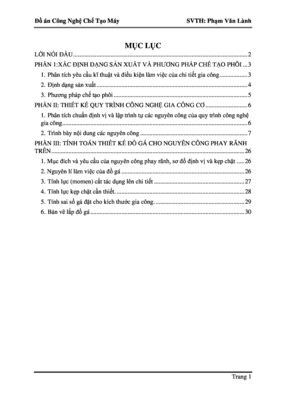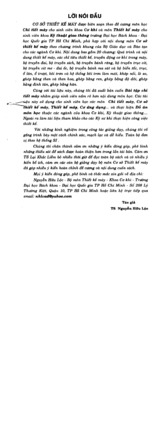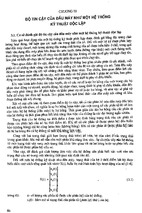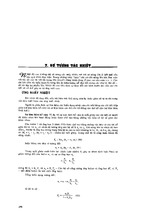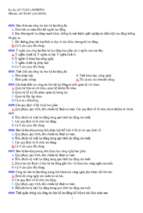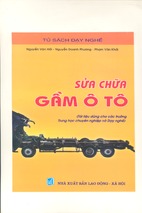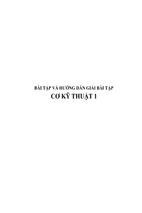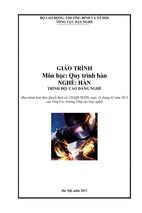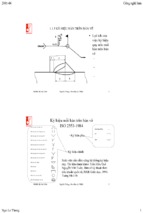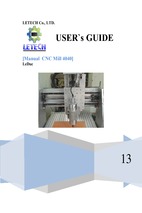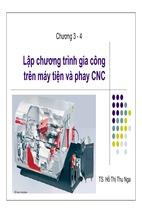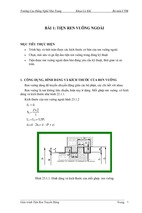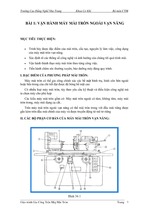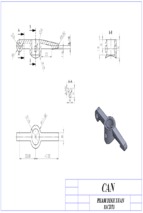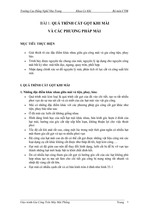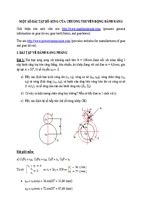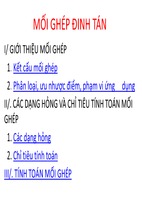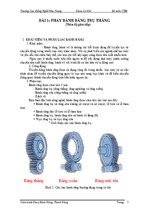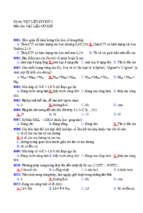HANDBOOK OF
COMPARATIVE WORLD
S TEEL S TA N DA R D S
SECOND EDITION
J O H N E . B R I N G A S , E D I TO R
Search
Ta b l e o f C o n t e n t s
Indexes
Steel Grade/Name Index
UNS Number Index
Steel Number Index
Handbook of Comparative
World Steel Standards
ASTM DS67A
2nd Edition
John E. Bringas, Editor
ii
Library of Congress Cataloging-in-Publication Data
nd
Handbook of comparative world steel standards / John E. Bringas, editor. – 2 ed.
p.cm – (ASTM data series; DS 67A)
“ASTM stock number: DS67A.”
ISBN 0-8031-3042-2
1. Steel — Standards —Handbooks, manuals, etc., 2. Steel alloys — Standards — Handbooks,
manuals, etc. I. Bringas, John E., 1953- II. ASTM data series publication; DS 67A.
TA472.H25 2002
620.1’7’0218—dc21
2001045950
CIP
Copyright 2002 ASTM International, West Conshohocken, PA. All rights reserved. This material may
not be reproduced or copied, in whole or in part, in any printed, mechanical electronic, film, or other
distribution and storage media, without the written consent of the publisher.
Photocopy Rights
Authorization to photocopy items for internal, personal, or educational classroom use, or the
internal personal, or education classroom use of specific clients, is granted by the American
Society for Testing and Materials (ASTM International) provided that the appropriate fee is
paid to the Copyright Clearance Center, 222 Rosewood Drive, Danvers, MA 01923; Tel: 978-7508400; online: http://www.copyright.com/.
Printed in Baltimore, MD
2002
Handbook of Comparative World Steel Standards
iii
Acknowledgements
The author gratefully acknowledges the assistance of Denise Lamy, M.Sc., P.Eng.
(metallurgical engineer), who is the Assistant Editor of this book. Denise worked many long
hours, weekends, and holidays to assist in completing this book. Her work in compiling the
heat treatment terms for each standard was of particular importance. She was also my main
sounding board and was always there to offer her advice when difficult technical decisions had
to be made.
There were also several ASTM committee members contacted for their input during the
progress of this book. They added valuable insights into the history and technical aspects of
the ASTM standards data found in this book. The ASTM publishing staff, including Robert
Meltzer, Kathy Dernoga and Margie Lawlor, were most supportive of my requests to obtain
access to the hundreds of standards needed to write this book. I appreciate their patience and
confidence in me to complete the work. Thank you all.
The author also acknowledges the dedicated assistance of Christine Doyle, who entered all the
data in the book with care and diligence, often into the wee hours of the night; and to Nina
Phan who assisted in the research for CEN Standards with Superseded Former National
Standards.
A special thanks is extended to IHS Engineering Products for use of their Engineering
Resource Center (ERC).
The e-book on CD-ROM was designed and created by Arthur Austin, EIT, ACE, and Manon
Losier, M.Sc. at CASTI Publishing Inc. Their quick turn-around time to create this e-book and
the added value functionality it brings to this project is appreciated.
A book and accompanying e-book cannot be produced by one person. It takes a dedicated team
of professionals. These acknowledgments cannot, however, adequately express the author’s
sincere appreciation and gratitude for everyone’s assistance. Without it, this book would never
have been completed.
Handbook of Comparative World Steel Standards
v
Preface
This is the book I never wanted to write, but always wanted to have. As a metallurgical
engineer, author of the four CASTI Metals Data Books, and member of ASTM A01 and B02
standard committees, I knew all too well the many pitfalls and challenges of writing such a
book. And there were many I wasn't aware of, which created far too many surprises and delays
in completing this book.
Comparing steel standards is not an exact science, so the biggest challenge of preparing such a
book was deciding on the "rules of comparison." Of the similar books on the market today, none
explain in detail why one steel was compared to another. They just appeared together in a list
of steels. So I kept a daily diary to assist in finding a workable set of comparison rules that I
could share with other users to assist them in understanding how and why one steel is
comparable to another.
To say the least, these rules changed from chapter to chapter while the book was being written.
It wasn't until the last chapter and appendix were completed that I was able to finalize the
rules of comparison. In the end, a complete review of the book was performed which resulted in
a reorganization of some chapters, while other chapters only needed some fine tuning. There
were too many occasions when I thought the book was finished, only to have to change, add, or
delete a rule which made yet another review of the book necessary.
After more than a year of researching and gathering metals data from around the world, then
trying to develop a comparison order to more than 100,000 pieces of data, I see this book as the
first step of an ongoing and expanding project. The addition of a fully searchable e-book on CDROM makes this product even more valuable, since trying to find one piece of data in more
than 100,000 is not an easy task. The e-book makes searching for a comparable steel a quick
and easy process. In some cases, the user may find out that the steel is non-comparable.
I hope you enjoy using this book as much as I will. Tie a chain to it and anchor it to your desk,
because once others see it, they'll want to use your copy. I am interested in your comments and
suggestions to improve this book, so I encourage you to send your feedback directly to ASTM.
John E. Bringas, P.Eng.
Handbook of Comparative World Steel Standards
vi
Getting Started With This Book
Comparing steel standards is not an exact science and there is no foolproof method. When you
begin to use this book, you'll quickly discover that there is no such thing as "equivalent" steel
standards. Then, consider the fact that not all steels have comparative counterparts and you'll
begin to understand the methodology used in this book. Before proceeding directly to the
contents of this book, it is strongly recommended that you read Chapter 1, which includes a
detailed explanation of the "rules of comparison" used in this book.
Since there was insufficient space on one page to place both the chemical composition and
mechanical properties tables, they were split into two separate tables. To assist the user in
keeping track of which comparison criteria were used for a given steel, each table within a
chapter was sequentially numbered and appended with either the letter A or B. Table numbers
ending in the letter A designate that the table was the main criterion used for comparison;
whereas table numbers ending with the letter B were "mirrored" from the A table.
For example, the steels listed in 5.3.2A Chemical Composition of Alloy Steel Tubes for Low
Temperature Service, were compared based on their chemical composition; whereas the steels
listed in 5.3.2B Mechanical Properties of Alloy Steel Tubes for Low Temperature Service, were
arranged in the same groups as those in the chemical composition table (i.e., the mechanical
properties table was "mirrored" from the chemical composition table).
Each group of steel data in the tables is separated by two types of horizontal lines: black and
grey. Black lines separate groups of steels that are more closely comparable to each other,
whereas grey lines separate steel data within a comparative group. Caution: do not confuse the
thinner dividing black line within a table, with the thicker black line that borders the outside
of the table. The pages are formatted to keep comparative groups together as much as possible.
However, when a group of comparative steels extends to more than one page, a note is place at
the bottom of the page to indicate that the comparative group continues on the following page,
i.e., NOTE: This section continues on the next page.
Handbook of Comparative World Steel Standards
vii
Getting Started With This CD-ROM
Minimum System Requirements
- 486 or higher, Microsoft Windows 95/98/Me, Windows NT 4.0 (SP 4), 2000
- 16 MB RAM and 640 x 480 video resolution (higher resolution will improve readability)
- 10 MB hard disk space, plus 7 MB additional temporary disk space for installation
Note: there are two different editions of Acrobat Reader. The standard Acrobat Reader edition
does not have the search function, whereas Acrobat Reader with Search does contain the
search function. Be aware that not all PDF files contain search engines, although the e-book
PDF on this CD-ROM does. Acrobat Reader with Search is included on this CD-ROM.
Installation of Acrobat Reader 4.05 with Search Tool
It is very important that Acrobat Reader 4.05 with Search is fully installed before running this
CD-ROM. After inserting the CD-ROM into the CD drive, the Autoplay Software will
determine if Acrobat Reader with Search is installed properly on your computer. The status of
Acrobat Reader is shown in the bottom window of the startup menu.
If Acrobat Reader with Search needs to be installed, please click the "Install Acrobat Reader
4.05" link. This will launch the installation of Acrobat Reader 4.05 with Search (Windows
95/98/Me/NT/2000 version) to your hard drive. If you have the standard edition of Acrobat
Reader without the Search Tool, you must install Acrobat Reader with Search from this CDROM.
After the installation is completed, please re-insert the CD-ROM into the drive which will
allow the software to verify that Acrobat Reader has been installed successfully, as shown in
the bottom window in the startup menu.
Getting Started
The E-book of Comparative World Steel Standards on CD-ROM is a fully searchable Acrobat
PDF file. Once the installation procedure is completed, a main menu will appear with several
options to navigate and search through the e-book. This menu contains links to the Table of
Contents, all four Indexes, and to the Search Tool. Each chapter in the Table of Contents and
all four indexes are linked to their respective first page.
Starting the search tool can be done by clicking on the Search link in the main menu or by
clicking on the "binocular over the page" icon on the tool bar. Please be aware that the icon of
the binocular (only) is the Find tool, which is a less powerful searching tool. Regardless of the
page you are on in the e-book, you can always click on the "binocular over the page" icon to
open the search window. For more assistance with using Acrobat Reader, click on the Help
button, then select Reader Guide.
Troubleshooting
If the main menu does not appear on your screen after the CD-ROM is inserted in your
computer, the CD-ROM startup AutoPlay function for Windows 95/98/Me/NT/2000 is not
setup. Please consult your OS manual for instructions to enable the AutoPlay function.
Handbook of Comparative World Steel Standards
ix
Table of Contents
1. Introduction to Comparing World Steel Standards
Myth and Methodology When Comparing Steel Standards
“Comparative” and “Closest Match”
Organization
Definition and Steel Terms
Questions Regarding the Rules of Comparison
Non-Comparable Steels
Criteria for Comparing Steels
List of Comparison Rules
Brief Introduction to Steel Standards and Designation Systems
ASTM Designation System
ASTM Reference Standards and Supplementary Requirements
SAE Designation System and Discontinued AISI Designation System
UNS Designation System
Canadian Standards Association (CSA)
Introduction to European Standard Steel Designation System
EN 10027 Standard Designation System for Steels
Steel Names
Steel Numbers
Former National Standards Replaced by CEN Standards
2. Carbon and Alloy Steels for General Use
3. Structural Steel Plates
4. Pressure Vessel Steel Plates
5. Steel Tubes and Pipes
6. Steel Forgings
7. Steel Castings
8. Wrought Stainless Steels
9. Steels for Special Use
Free-Machining Steels
Spring Steels
Tool Steels
Bearing Steels
1
2
4
5
6
6
6
8
9
10
11
11
13
14
14
15
15
15
16
18
42
96
148
312
364
422
474
476
481
485
492
Appendix 1 - ASTM Ferrous Metal Standards
Appendix 2 - ASTM Discontinued Ferrous Metal Standards
Appendix 3 - JIS Steel and Related Standards
Appendix 4 - JIS Discontinued Steel and Related Standards
Appendix 5 - CEN Current Steel Standards
Appendix 6 - CEN Standards with Superseded Former National Standards
Appendix 7 - Former National Standards Superseded by CEN Standards
Appendix 8 - ISO Iron and Steel Product Standards
Appendix 9 - ASTM A 941-00 Terminology Relating to Steel, Stainless Steel,
Related Alloys, and Ferroalloys
Appendix 10 - ASTM E 527–83 (1997) Numbering Metals and Alloys (UNS)
Appendix 11 - SI Quick Reference Guide
498
514
526
532
538
544
556
568
Steel Grade/Name Index
UNS Number Index
Steel Number Index
598
648
656
576
584
592
Handbook of Comparative World Steel Standards
Chapter
1
INTRODUCTION TO COMPARING
WORLD STEEL STANDARDS
Myth and Methodology When Comparing Steel Standards
When comparing steel standards from different national and international standard development
organizations (SDOs), there is no such thing as "equivalent" steel standards. At best, one may be
able to group "comparable" steel standards together based on some defined set of rules, which has
been done in this book. For example, ASTM A 516/A 516M grade 70 is comparable to JIS G 3118
symbol SGV 480 and to EN 10028-2 steel name P295GH, based on chemical compositions and
mechanical properties. Yet they are not equivalent since there are differences in their chemical
compositions and mechanical properties. Comparing steel standards is not an exact science and
cannot be made into a mathematical equation, where two sides of an equation are equal to one
another, since there will always be differences between standards.
These differences may be significant to one user, but not significant to another user. Therefore, this
book uses the term "comparative" to denote similar standards that have been compared to each
other. Comparative is a relative word that is inevitably dependent upon the end user's requirements,
who is ultimately responsible for selecting the appropriate steel for a specific application.
There are some steel standards that are shared by multiple SDOs. For example, EN ISO 4957 –Tool
Steels, is a standard that is "shared" within the European Committee for Standardization (CEN) and
the International Standards Organization (ISO) systems. Consequently, the data are equivalent in
both systems, but there is only one standard.
There are also different standards that share the same grades of steel. For example, ASTM A 485
and EN ISO 683-17 share seven identical bearing steel grade chemical compositions, yet the body of
each standard is different (that is, grain size, hardenability, microstructure and hardness,
inspection, testing, etc.). As a result, these seven bearing steels within these two standards are not
equivalent, but are comparable.
Handbook of Comparative World Steel Standards
2
Introduction to Comparing World Steel Standards
Chapter 1
"Comparative" and "Closest Match"
There is also a difference between "comparative" and "closest match" when evaluating steel
standards. While gathering the data for this book, it was difficult to decide whether to include data
on a technically comparative basis or on a closest match basis as both have their merits and
limitations.
For instance, a technically comparative group of steels can assist the user with making a material
selection based on technical merit. However, this may severely limit the number of steels that would
be comparable. On the other hand, displaying the closest match data will usually increase the
number of comparative steels for the user to consider, but at the risk of widening the technical
comparison criteria. Likewise, a strict technical comparison will give more accurate results, but a
closest match comparison will provide more data to assist the user in searching for similar steels.
There are many instances in the book where it would be a disservice to the reader not to include the
closest match steels, since there would be no comparisons otherwise. Since this broadens the
technical comparison criteria, the user is warned that the data herein cannot substitute for
education, experience, and sound engineering judgment after evaluating all of the specifications
within each comparable standard.
In the end, there are no hard rules that can be formulated to distinguish between "comparative
steels" and "closest match steels." Consequently, at the editor's discretion, both types of comparisons
are used in this book. The following is one example of the comparison process, with technically
comparative steels and closest match steels used in the table.
Table 1.1 lists the chemical compositions of nine grades of cast steels that are essentially Cr-Ni-Mo
alloys, with nominally 0.30 % C. If a strict technical comparison was made based on their chemical
composition, none of these alloys would be comparable since they would differ in either their carbon,
manganese, chromium, nickel, or molybdenum contents. Try comparing these data yourself.
Table 1.1 List of Chemical Compositions of Cr-Ni-Mo Alloy Cast Steels Before Comparison
Standard
Designation
Grade, Class, Type
Symbol or Name
Weight, %, max, Unless Otherwise Specified
Steel
UNS
Number Number
C
Mn
Si
P
S
Cr
Ni
Mo
Others
SC 4330
---
---
0.28-0.33
0.60-0.90
0.30-0.60
0.035
0.040
0.70-0.90
1.65-2.00
0.20-0.30
---
SC 4340
---
---
0.38-0.43
0.60-0.90
0.30-0.60
0.035
0.040
0.70-0.90
1.65-2.00
0.20-0.30
---
SCNCrM 2
---
---
0.25-0.35
0.90-1.50
0.30-0.60
0.040
0.040
0.30-0.90
1.60-2.00
0.15-0.35
---
GS-25 CrNiMo 4
1.6515
---
0.22-0.29
0.60-1.00
0.60
0.020
0.015
0.80-1.20
0.80-1.20
0.20-0.30
---
ASTM A 958-00
JIS G 5111:1991
GS-34 CrNiMo 6
1.6582
---
0.30-0.37
0.60-1.00
0.60
0.020
0.015
1.40-1.70
1.40-1.70
0.20-0.30
---
GS-30 CrNiMo 8 5
1.6570
---
0.27-0.34
0.60-1.00
0.60
0.015
0.010
1.10-1.40
1.80-2.10
0.30-0.40
---
GS-33 CrNiMo 7 4 4
1.8740
---
0.30-0.36
0.50-0.80
0.60
0.015
0.007
0.90-1.20
1.50-1.80
0.35-0.60
---
20 NCD4-M
---
---
0.17-0.23
0.80-1.20
0.60
0.025
0.020
0.30-0.50
0.80-1.20
0.40-0.80
---
G30NiCrMo8
---
---
0.33
1.00
0.60
0.030
0.020
0.80-1.20
1.70-2.30
0.30-0.60
---
DIN 17205:1992
AFNOR
NF A 32-053:1992
AFNOR
NF A 32-054:1994
Handbook of Comparative World Steel Standards
Chapter 1
Introduction to Comparing World Steel Standards
3
Five grades of steel were eventually eliminated from Table 1.1 after technical comparison. This
produced Table 1.2, which was then divided into two separate comparative groups based on the
differing molybdenum contents above and below 0.30–0.35 % Mo. The thin black line in Table 1.2 is
the separator between the two comparative groups.
Table 1.2 List of Chemical Compositions of Cr-Ni-Mo Cast Alloy Steels After Comparison
Standard
Designation
Grade, Class, Type
Symbol or Name
Weight, %, max, Unless Otherwise Specified
Steel
UNS
Number Number
P
S
Cr
Ni
Mo
Others
ASTM A 958-00
SC 4330
---
---
0.28-0.33
0.60-0.90
0.30-0.60
0.035
0.040
0.70-0.90
1.65-2.00
0.20-0.30
---
JIS G 5111:1991
SCNCrM 2
---
---
0.25-0.35
0.90-1.50
0.30-0.60
0.040
0.040
0.30-0.90
1.60-2.00
0.15-0.35
---
DIN 17205:1992
GS-33 CrNiMo 7 4 4
1.8740
---
0.30-0.36
0.50-0.80
0.60
0.015
0.007
0.90-1.20
1.50-1.80
0.35-0.60
---
G30NiCrMo8
---
---
0.33
1.00
0.60
0.030
0.020
0.80-1.20
1.70-2.30
0.30-0.60
---
AFNOR
NF A 32-054:1994
C
Mn
Si
However, if strict technical comparison rules were applied, Grade SCNCrM 2 could be rejected based
on its higher manganese content when comparing it to SC 4330. In that case, SC 4330 would be
rejected since it would not have a comparative steel (that is, it takes two steels to make a
comparison). The same argument could be made when comparing GS-33 CrNiMo 7 4 4 and
G30NiCrMo8 in the second group, where the differing nickel contents could be a basis for rejection
on a stricter comparison.
A classic closest match example is shown in Table 1.3, where compared to the three other steels in
this group, DIN 17211 steel name 34 CrAlMo 5 is low on C, Cr, and Mo; and some may argue that,
on this basis, it does not belong to this comparative group. However, the Cr-Al-Mo alloys in this
group are typically used as nitriding steels, and steel name 34 CrAlMo 5 is the closest match DIN
17211 alloy for this group. So excluding it would be a disservice to the user, since it belongs to the
same application family and its inclusion in this group will direct the user to other similar nitriding
alloys.
Table 1.3 Chromium-Molybdenum-Aluminum (Cr-Mo-Al) Steels for Nitriding
Standard
Designation
Grade, Class,
Type, Symbol
or Name
ASTM A 355-89 (2000)
A
Steel
UNS
Number Number
Weight, %, max, Unless Otherwise Specified
C
Mn
Si
P
S
Cr
Ni
Mo
Others
0.50-0.70
0.15-0.35
0.035
0.040
1.40-180
---
0.30-0.40
Al 0.95-1.30
Al 0.70-1.20, Cu 0.30
---
K24065
0.38-0.43
JIS G 4202:1979
SACM 645
---
---
0.40-0.50
0.60
0.15-0.50
0.030
0.030
1.30-1.70
0.25
0.15-0.30
DIN 17211:1987
34 CrAlMo 5
1.8507
---
0.30-0.37
0.50-0.80
0.40
0.025
0.030
1.00-1.30
---
0.15-0.25
Al 0.80-1.20
ISO 683-10:1987
41 CrAlMo 74
---
---
0.38-0.45
0.50-0.80
0.50
0.030
0.035
1.50-1.80
---
0.25-0.40
Al 0.80-1.20
There are many opportunities to make technical errors that may lead to inappropriate steel
comparisons. For example, when comparing stainless steels there are many technical decisions to
make since it is not common to find identical chemical compositions within standards from different
countries. Table 1.4 shows a list of comparative Cr-Ni-Mo wrought austenitic stainless steels from
the USA, Japan, and European Union. Note the differences in the Cr, Ni, and Mo contents among all
the standards and the N limit in the EN standard. These differences will affect the corrosion
resistance performance in many applications, such that the user must be very careful when selecting
a comparative steel based solely on data in this book.
Handbook of Comparative World Steel Standards
4
Introduction to Comparing World Steel Standards
Chapter 1
Table 1.4 List of Comparative Cr-Ni-Mo Wrought Austenitic Stainless Steels
Standard
Designation
Weight, %, max, Unless Otherwise Specified
Grade, Class, Type
Symbol or Name
Steel
Number
UNS
Number
C
Mn
Si
P
S
Cr
Ni
Mo
ASTM A 276-00
316L
---
S31603
0.030
2.00
1.00
0.045
0.030
16.0-18.0
10.0-14.0
2.00-3.00
---
JIS G 4303:1998
SUS316L
---
---
0.030
2.00
1.00
0.045
0.030 16.00-18.00 12.00-15.00
2.00-3.00
---
JIS G 4318:1998
EN 10088-3:1995
Others
SUS316L
---
---
0.030
2.00
1.00
0.045
0.030 16.00-18.00 12.00-15.00
2.00-3.00
---
X2CrNiMo17-12-2
1.4404
---
0.030
2.00
1.00
0.045
0.030 16.50-18.50 10.00-13.00
2.00-2.50
N 0.11
X2CrNiMo17-12-3
1.4432
---
0.030
2.00
1.00
0.045
0.030 16.50-18.50 10.50-13.00
2.50-3.00
N 0.11
X2CrNiMo18-14-3
1.4435
---
0.030
2.00
1.00
0.045
0.030 17.00-19.00 12.00-15.00
2.50-3.00
N 0.11
In summary, if strict technical comparison is made to this type of data, there would be no data
remaining, which would serve no purpose. By widening the technical comparison criteria to find the
closest match steels, the user must understand that these steels are not equivalent and cannot be
indiscriminately substituted without first reviewing the complete current standards and securing
competent technical advice prior to any decision-making.
To find a balance for comparison of steels by product form, use (application), mechanical properties,
chemical compositions, related manufacturing processes (including heat treatment), etc., a
methodology had to be put in place and rules had to be established. However, as much as
methodology and rules were essential in preparing this book, there were many instances where they
could not cover every variable and circumstance. Therefore, difficult comparison decisions as those
described previously had to be made. There were literally hundreds, if not more than a thousand,
such decisions made in this book. In these cases, the closest match comparison decisions were made
at the discretion of the editor.
Organization
This book will typically be used when a specific steel standard or grade is known and a comparative
steel is sought. One of the main variables in selecting a specific grade of steel is its intended
application (use) or product form, which usually narrows the selection to a family of steels.
Therefore, the chapters in this book were organized by product form and use, as follows:
1.
2.
3.
4.
5.
6.
7.
8.
Carbon and Alloy Steels for General Use
Structural Steel Plates
Pressure Vessel Steel Plates
Steel Tubes and Pipes
Steel Forgings
Steel Castings
Wrought Stainless Steels and Heat-Resisting Steels
Steels for Special Use
Handbook of Comparative World Steel Standards
Chapter 1
Introduction to Comparing World Steel Standards
5
Although the chapter list, at first glance, looks rather straightforward, there were many difficult
decisions regarding the steel comparisons within these chapters. For example, internationally the
terms "pipe" and "tube" have different definitions. ASTM has 9 definitions for "pipe" and 22
definitions for "tube,” depending on the standard's subject matter and application (see ASTM
th
Dictionary of Engineering Science & Technology, 9 edition). In contrast, ISO 2604 Steel Products for
Pressure Purposes - Quality Requirements - Part II: Wrought Seamless Tubes, notes that: "The word
tube is synonymous with pipe.”
Definitions of Steel Terms
Finding definitions for carbon steel, alloy steel, and stainless steel turned out to be a very complex
task and resulted in numerous changes throughout the writing of this book from one chapter to
another.
ASTM A 941-00 Terminology Relating to Steel, Stainless Steel, Related Alloys, and Ferroalloys (see
Appendix 8) defines the terms: carbon steel, alloy steel, low-alloy steel, and stainless steel. EN
10020:2000 Definition and Classification of Grades of Steel defines the terms: non alloy steels, other
alloy steels (which include alloy quality steels and alloy special steels), and stainless steels. Note
that these two standards, from the USA and Europe/UK, differ in the terms used to describe the
different types of steel. The user of comparative steel standards data must take into account that
each national SDO has their own set of terms and definitions for steels and related products and, in
some cases, may have multiple definitions. For example, three different definitions for carbon steel
can be found in ASTM standards A 941-00, A 902-99, and F 1789-01.
In this book, steels have been divided into three main categories:
1. Carbon Steels
2. Alloy Steels
3. Stainless Steels
ASTM A 941-00 and EN 10020:2000 were used as guidelines in developing these categories. Where
practical, these steel categories were further divided into subcategories based on their product form,
intended application, service requirement, or other similar criteria.
Handbook of Comparative World Steel Standards
6
Introduction to Comparing World Steel Standards
Chapter 1
Questions Regarding the Rules of Comparison
When comparing two or more steel standards, the following questions can be asked:
Should mechanical properties or chemical composition be the main criteria? If mechanical properties
are compared, which property should be the first criteria for comparison, that is, yield strength,
tensile strength, elongation, impact strength, or hardness, etc.? Once having selected a primary
criteria, say tensile strength, should there be a secondary criteria for ranking the comparative steels
within this group, for example, yield strength, hardness, etc.?
When mechanical properties or chemical compositions vary with section thickness for a given steel
grade, which section thickness data should be selected as the criteria for comparison? When two
steels have the same minimum tensile strength values, but have different yield strength values, are
they no longer similar?
Should comparisons be based on the data's minimum values, maximum values, or average values of
their min/max ranges? Should alloy steels and stainless steels be compared on their mechanical
properties when they are generally selected for use based on their alloying elements' abilities to
provide satisfactory service in their intended applications?
Is it reasonable to compare steels based only on their chemical compositions, regardless of their
product form? That is, should forging steels be compared to steel plates or tubes because they have
similar chemical compositions and is this type of comparative data useful in engineering practice?
Non-Comparable Steels
Not all steels have comparative counterparts. Knowing that a steel is non-comparable is just as
important as knowing that there are comparative steels. Otherwise, valuable time could be wasted
searching for something that does not exist. All steel grades within the listed standards in this book
are either designated as comparable or non-comparable to assist the user in finding data.. Noncomparable steels can be found at the end of each chapter.
Criteria for Comparing Steels
The two major criteria for comparing steels in this type of book are mechanical properties and
chemical compositions. For each given standard steel grade, there is typically only one chemical
composition, which makes it ideal as a comparison criterion. However, there are several mechanical
properties that can be used to compare standard steel grades and, to be consistent throughout a book
of this type, only one property can be chosen. The decision was to use a steel's tensile strength as the
second comparison criterion.
Handbook of Comparative World Steel Standards
Chapter 1
Introduction to Comparing World Steel Standards
7
Having settled on chemical composition and tensile strength as the two main comparison criteria,
the next step was to decide when to apply one or the other, or both. Since carbon steels are typically
selected based on mechanical properties, it was decided that tensile strength would be the first
criterion used for comparing carbon steels. Likewise, since alloys steels and stainless steels are
generally selected based on their chemistry, it was decided that chemical composition would be used
to compare them.
An exception to the above methodology is for the structural steels data in Chapter 3, where the
tensile strength was used as the main comparison criterion for carbon and alloy steels. This
exception was made because structural steels are generally selected based on their mechanical
properties. Also in this same chapter, high-strength low-alloy steels are treated as a sub-category to
alloy steels, although ASTM A 941 defines them separately.
Since there was insufficient space on a page to place both the chemical composition and mechanical
properties tables, they were split into two separate tables. To assist the user in keeping track of the
comparison criteria used for a given steel, each table within a chapter was sequentially numbered
and appended with the letter A or B. Table numbers ending in the letter A designate that it was the
main criterion used for comparison, whereas table numbers ending with the letter B were "mirrored"
from the A tables.
In this manner, the user must first consider the data in the "A" table, then see how well the data in
the B table match the steels which are being compared.
This is not a foolproof methodology of comparison. For example, ASTM A 958 Grade SC 4330 has one
chemical composition, but has 13 different strength classes based on heat treatment (see chapter 7).
So just because two steel grades have comparative chemical compositions does not mean that they
are comparable in mechanical properties, and vice versa. Using data found in this book is only one
step in finding suitable comparable steel for the intended application.
With this basic methodology in place, the following is a list of the comparison rules that were
established to produce this book.
Handbook of Comparative World Steel Standards
8
Introduction to Comparing World Steel Standards
Chapter 1
List of Comparison Rules
1. Carbon steel comparisons are based on the specified minimum tensile strength and listed in
ascending order. Typically, comparative groups are made for every 50 MPa (50 N/mm2) in tensile
strength (that is, a black line divides comparative groups every 50 MPa (50 N/mm2)). When an
abundance of data is available, this limit may be reduced to improve the comparison accuracy.
Mechanical property sub-categories, such as steels with impact testing below 0°C, are used to
further narrow the comparison process.
2. If a carbon steel's tensile strength varies with section thickness, the tensile strength of the
lowest section thickness will be used as the governing comparison factor.
3. If a carbon steel standard does not contain mechanical properties, such as those found in
Chapter 2 on Carbon and Alloy Steels for General Use, then the steels will be compared based on
their carbon content.
4. The major criterion for alloy steel and stainless steel comparisons is chemical composition. Once
these steels are placed in a comparative group by chemical composition, they are then arranged
in ascending order within these groups by their tensile strength. Where possible, subcategories
of alloy and stainless steel groups are made to further narrow the comparison process.
5. Chemical compositions listed are the heat analysis requirements in the standards (also called
ladle or cast analysis). Product analyses are not listed.
6. The chemical composition and mechanical properties data for the same steel grades are not listed
on the same page due to space limitations. Consequently, as a means of keeping the data
consistent between these two sets of tables, each table is numbered, and each table number ends
with either the letter A or B
7. Each set of steel data in the tables is divided by two types of horizontal lines: black and grey.
Black lines separate groups of steels that are more closely comparable to each other, whereas
grey lines separate steel data within a comparative group. This does not mean that steels outside
of these groups cannot be compared, since these horizontal lines are dependent upon all of the
comparison lines in this list and can be subjective at times. Caution: do not confuse the thinner
dividing black line within a table with the thicker black rule that borders the table. To assist in
this regard, the pages were formatted to keep comparative groups together as much as
practicable. However, when a group of comparative steels extends to more than one page, a note
is placed at the bottom of the page to indicate that the comparative group continues on the
following page, that is, "NOTE: this section continues on the next page."
8. Steel data in standards are not always mandatory. Some data are listed as typical values or
informative values, or are found in supplementary requirements. This type of data is still very
useful, and has been included in this book whenever possible. This type of data is identified with
an explanatory note that appears in the list of standards at the beginning of the related chapter.
Handbook of Comparative World Steel Standards
Chapter 1
Introduction to Comparing World Steel Standards
9
9. Some standards included multiple requirements for impact testing, for example, differing test
temperatures or requirements for subsize specimens. Where permitted, as much data as possible
were included. However, there are occasions when the phrase "see standard" was used to
indicate that more data could be found in the standard. The phrase "see standard" was also used
when the standard did not specify a test temperature, but did specify an absorbed energy value.
Impact testing values listed in the tables are typically for full-size specimens and for the
minimum average result at the testing temperature, but do not include the minimum individual
test piece requirement, if any.
10. For the purpose of this book, phrases like: "may be applied if necessary" or "may be applied by
agreement between the purchaser and supplier" or "the manufacturer may find it necessary to"
or "when specified" or " may be added if necessary" are not a part of the comparison process.
11. Data from footnotes in the chemical composition and mechanical properties tables of steel
standards were considered during the comparison process, but were not always reported in the
book due to lack of space in the tables or because they represented technical issues that were too
complex to be represented in a tabular format. In these cases, the note "see standard" was used.
12. For the most part, we kept the same heat treatment terms used in each standard and listed
them at the beginning of each chapter. Abbreviations in the tables were made based on the
terms used in the standards. A concerted effort was made to make the abbreviations consistent
from chapter to chapter, although there are exceptions, because each heat treatment
abbreviation must be referred to in the list of heat treatment terms at the beginning of each
chapter. There are many instances when the heat treatment requirements within a standard
became very cumbersome to include in a small cell within a table. Consequently, the phrase "see
standard" is used to direct the user to the standard to read all the heat treatment details
involved.
13. A determined effort was made to enter the data in this book in a manner identical to that listed
in the related standard, including the use of Nb (niobium) or Cb (columbium). It should be noted
that even within the same SDO, data were not always entered in the same manner from
standard to standard, for example, TP304 versus TP 304, where a space between the letter P and
the number 3 is listed in the data. This becomes significant when using the search engine on the
accompanying e-book’s CD-ROM.
14. When a steel grade was found to be non-comparable, it was included at the end of the chapter in
the non-comparable list. Therefore, if a particular steel was found to be unique and did not have
a comparable steel, the user would not have to search any further.
Brief Introduction to Steel Standards and Designation Systems
In the world of standardization, metals were at the forefront at the turn of the twentieth century. In
1895, the French government assigned a commission to formulate standard methods of testing
materials of construction. Later that year, the European member countries of the International
Association for Testing Materials (IATM) held their first conference in Zurich and standardization of
metals began.
Handbook of Comparative World Steel Standards
10
Introduction to Comparing World Steel Standards
Chapter 1
By reviewing some examples of the more prominent metals designation systems, a direction is
offered to assist those who use metal standards as a part of their work or study. This section is not
all inclusive. The amount of information on this topic could easily make up a complete book.
ASTM Designation System
ASTM's designation system for metals consists of a letter (A for ferrous materials) followed by an
arbitrary sequentially assigned number. These designations often apply to specific products, for
example A 548 is applicable to cold-heading quality carbon steel wire for tapping or sheet metal
screws. Metric ASTM standards have a suffix letter M.
Examples of the ASTM ferrous metal designation system, describing its use of specification numbers
and letters, are as follows.
ASTM A 516/A 516M-90 (2001) Grade 70 - Pressure Vessel Plates, Carbon Steel, for
Moderate- and Lower-Temperature Service:
•
•
•
•
•
•
The "A" describes a ferrous metal, but does not subclassify it as cast iron, carbon
steel, alloy steel, or stainless steel.
516 is a sequential number without any relationship to the metal’s properties.
The "M" indicates that the standard A 516M is written in rationalized SI units
(the "M" comes from the word "Metric"), hence together A 516/A 516M utilizes
both inch-pound and SI units.
90 indicates the year of adoption or last revision.
(2001) number in parentheses indicates the year of last reapproval.
Grade 70 indicates the minimum tensile strength in ksi, 70 ksi or 70,000 psi.
In the steel industry, the terms Grade, Type, and Class have specific meaning. Grade is used to
describe chemical composition, Type is used to define deoxidation practice, and Class is used to
indicate other characteristics such as strength level or surface finish. However, within ASTM
standards, these terms were adapted for use to identify a particular metal within a metal standard
and are used without any "strict" definition, but essentially mean the same thing. Some rules do
exist, as follows.
ASTM A 106-99 Grade A, Grade B, Grade C – Seamless Carbon Steel Pipe for HighTemperature Service:
• Typically an increase in alphabet (such as the letters A, B, C) results in higher
strength (tensile or yield) steels, and if it is an unalloyed carbon steel, an increase
in carbon content.
• In this case, Grade A: 0.25 % C (max.), 48 ksi tensile strength (min.); Grade B:
0.30 % C (min.), 60 ksi tensile strength (min.); and Grade C: 0.35 % C, 70 ksi
tensile strength (min.).
ASTM A 276-00 Type 304, 316, 410 – Stainless and Heat-Resisting Steel Bars and
Shapes:
• Types 304, 316, 410 and others are based on the SAE designation system for
stainless steels (see SAE and former AISI description that follows).
Handbook of Comparative World Steel Standards
Chapter 1
Introduction to Comparing World Steel Standards
11
An interesting use of ASTM grade designators is found in pipe, tube, and forging products, where the
first letter "P" refers to pipe, "T" refers to tube, "TP" may refer to tube or pipe, and "F" refers to
forging. Examples are found in the following ASTM specifications:
•
•
•
•
•
ASTM A 335/A 335M-99 Grade P22; Seamless Ferritic Alloy-Steel Pipe for HighTemperature Service.
ASTM A 213/A 213M-99 Grade T22; Seamless Ferritic and Austenitic Alloy-Steel
Boiler, Superheater, and Heat-Exchanger Tubes.
ASTM A 269-01 Grade TP304; Seamless and Welded Austenitic Stainless Steel
Tubing for General Service.
ASTM A 312/A 312M-00 Grade TP304; Seamless and Welded Austenitic
Stainless Steel Pipes.
ASTM A 336/A 336M-99 Class F22 - Steel Forgings, Alloy, for Pressure and HighTemperature Parts.
ASTM Reference Standards and Supplementary Requirements
ASTM standards contain a section known as "Reference Documents" that lists other ASTM
standards, that either become a part of the original standard or its supplementary requirements.
Supplementary requirements are listed at the end of the ASTM standards and do not apply unless
specified in the purchase order, that is, they are optional.
SAE Designation System and Former AISI Designation System
Carbon and Alloy Steels
For many years, certain grades of carbon and alloy steels have been designated by a four-digit
AISI/SAE numbering system that identified the grades according to standard chemical compositions.
Since the American Iron and Steel Institute (AISI) does not write material specifications, the
association of AISI with grade designations has been discontinued. Beginning with the 1995 edition
of the Iron and Steel Society (ISS) Strip Steel Manual, the four-digit designations are referred to
solely as SAE designations.
The SAE system uses a basic four-digit system to designate the chemical composition of carbon and
alloy steels. Throughout the system, the last two digits give the carbon content in hundredths of a
percent. Carbon steels are designated 10XX. For example, a carbon steel containing 0.45 % carbon is
designated 1045 in this system.
Resulfurized carbon steels are designated within the series 11XX, resulfurized and rephosphorized
carbon steels 12XX and steels having manganese contents between 0.9 and 1.5 %, but no other
alloying elements are designated 15XX. Composition ranges for manganese and silicon and
maximum percentages for sulfur and phosphorus are also specified.
Handbook of Comparative World Steel Standards
12
Introduction to Comparing World Steel Standards
Chapter 1
For alloy steels, the first two digits of the SAE system describe the major alloying elements present
in the material, the first digit giving the alloy group. For example the 43XX series steels contain
1.65–2.00 % Ni, 0.50–0.80 % Cr and 0.20–0.30 % Mo, along with composition ranges for manganese
and silicon and maximums for sulfur and phosphorus.
Additional letters added between the second and third digits include "B" when boron is added
(between 0.0005 and 0.003 %) for enhanced hardenability, and "L" when lead is added (between 0.15
and 0.35 %) for enhanced machinability. The prefix "M" is used to designate merchant quality steel
(the least restrictive quality descriptor for hot-rolled steel bars used in noncritical parts of structures
and machinery). The prefix "E" (electric-furnace steel) and the suffix "H" (hardenability
requirements) are mainly applicable to alloy steels. The full series of classification groups is shown
in Table 1.5.
Table 1.5 Types and Identifying Elements in Standard SAE Carbon and Alloy Steels
Carbon Steels
Description
10XX
11XX
12XX
15XX
non-resulfurized, 1.00 manganese maximum
resulfurized
reosphorized and refurized
non-resulfurized, over 1.00 manganese maximum
Alloy Steels
13XX
40XX
41XX
43XX
46XX
47XX
48XX
51XX
51XXX
52XXX
61XX
86XX
87XX
88XX
92XX
50BXX
51BXX
81BXX
94BXX
1.75 manganese
0.20 or 0.25 molybdenum or 0.25 molybdenum and
0.042 sulfur
0.50, 0.80, or 0.95 chromium and 0.12, 0.20, or 0.30
molybdenum
1.83 nickel, 0.50 to 0.80 chromium, and 0.25
molybdenum
0.85 or 1.83 nickel and 0.20 or 0.25 molybdenum
1.05 nickel, 0.45 chromium, 0.20 or 0.35
molybdenum
3.50 nickel and 0.25 molybdenum
0.80, 0.88, 0.93, 0.95, or 1.00 chromium
1.03 chromium
1.45 chromium
0.60 or 0.95 chromium and 0.13 or 0.15 vanadium
minimum
0.55 nickel, 0.50 chromium, and 0.20 molybdenum
0.55 nickel, 0.50 chromium, and 0.25 molybdenum
0.55 nickel, 0.50 chromium, and 0.35 molybdenum
2.00 silicon or 1.40 silicon and 0.70 chromium
0.28 or 0.50 chromium
0.80 chromium
0.30 nickel, 0.45 chromium, and 0.12 molybdenum
0.45 nickel, 0.40 chromium, and 0.12 molybdenum
Handbook of Comparative World Steel Standards
- Xem thêm -


